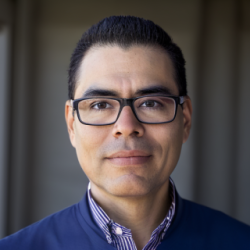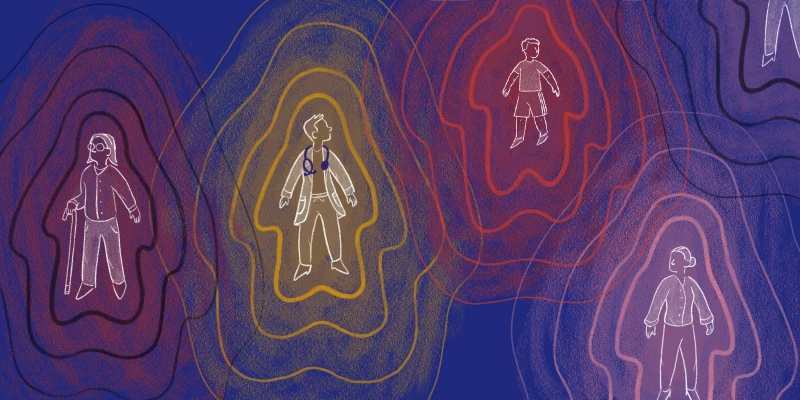Four out of five physicians (81%) say they are overworked, and three out of five are considering a career change, according to a Doximity poll.
Those figures are down slightly from 86% who reported feeling overworked in 2022, but still a substantial increase from 73% in 2021.
“We need a healthy workforce to deliver optimal care for patients, and the health care workforce is under tremendous strain,” Colin West, MD, PhD, medical director of employee well-being at Mayo Clinic, told Doximity. “We increasingly understand that this isn’t just a few ‘weak links,’ this affects a large proportion of physicians.”
Physician burnout and work dissatisfaction levels rose sharply at the onset of the COVID-19 pandemic — reaching 63% in 2021, up from 38% in 2020, 44% in 2017, 54% in 2014, and 46% in 2011, based on a multiyear report published in Mayo Clinic Proceedings.
The latest Doximity poll, which includes the responses of 2,659 physicians in October and November 2023, affirms that these concerns have become even more widespread since then.
A host of factors has driven the high prevalence of burnout among physicians, primarily issues in the practice and work environment, Tait Shanafelt, MD, lead author of the Mayo Clinic Proceedings report, told Doximity. He serves as associate dean and chief wellness officer at Stanford Medicine and has written extensively on the topic.
“A number of characteristics of the health care delivery system and practice environment create friction and make it difficult for physicians to provide patients the care they need,” Dr. Shanafelt said. Some of these characteristics include increased productivity expectations, less time with individual patients, documentation burden, and a misalignment of values between physicians and their organizations.
In addition, “now that a majority of physicians work as employees of large organizations, they have less flexibility and control,” he said. “Evidence also indicates that leader behaviors, mistreatment experiences, and suboptimal teamwork have a major impact.”
Dr. Shanafelt underscored ways in which medical culture and norms can negatively influence the workplace as well: “[The belief] that work should always come first, that physicians must be perfect in all circumstances, and are expected to be superhuman … contributes to physicians being compassionate with others but harsh and self-critical with themselves, feeling that their accomplishments are never good enough, and having difficulty setting healthy boundaries between personal and professional life.”
For some physicians, the combination of rising costs and decreasing reimbursement has pushed them to leave clinical work altogether. “The circumstances that practicing physicians are now faced with are markedly different than they were 20 years ago, both financially and operationally,” said Michael Bryan, MD, an ENT who decided to retire and close his practice after 27 years. “Reimbursements for the same RVUs are effectively less than half of what they were … and this is just an ongoing process of ‘de-evolution’ that will not stop soon.”
Demographic Differences
On average, women are more likely than men to report feeling overworked. The poll results show that 89% of women are overworked, compared with 77% of men.
Women are more likely to work in fields disproportionately affected by burnout like pediatrics, face inequitable nonpromotable work responsibilities, and have higher expectations to spend time with patients, according to Dr. West.
What’s more, many of the differences in demands between women and men can be subtle, such as in the case of inbox message responsibilities, Dr. Shanafelt added.
“A number of studies have now documented that women primary care physicians receive a higher volume of EHR inbox messages from patients, even after controlling for panel size and patient acuity,” he said. “This is an example of how gender may insidiously contribute to differences in actual workload and work burden that may not be intuitive or easily discernible.”
Overwork also appears to affect younger physicians more than older physicians: 89% of physicians 29 and under feel overworked, followed by 82% in their 30s, 83% in their 40s and 50s, 78% in their 60s, and 68% in their 70s. The most overworked age bracket, physicians 29 and under, are likely trainees, who are often tasked with the longest hours for the least pay. The conditions are driving 25% of them to already start looking at other career options.
“In addition to many of the factors impacting physicians in practice, residents and fellows have even less control over schedule, greater sleep deprivation, and experience more frequent mistreatment from patients/visitors as well as peers, nurses, and attending physicians,” Dr. Shanafelt said.
There are notable differences based on type of specialty as well. A greater percentage of primary care physicians (88%) report feeling overworked than surgeons (79%) and nonsurgical specialists (79%) — a disparity that appears to have widened since 2021.
Whether a result of lower pay, a deeper sense of moral injury, or a combination of other factors, numerous reports and studies have shown that overwork and burnout trend higher among primary care physicians than other specialties.
“Primary care is markedly underresourced and often disrespected,” Dr. West said. “Yet very high demands are placed on primary care clinicians to meet ever-growing needs of large panels of patients.”
Moreover, certain services such as being on call remain uncompensated in primary care, whereas some specialists have the option to charge for it.
“Family medicine has never been paid for being on call,” said Rebecca Pengilly, MD, a family physician who works at a clinic in Oregon. “That’s why we get phone calls at 3 a.m. by a mother who wants to know if she should try Tylenol for her 11-year-old son’s 101-degree fever.”
Among individual medical specialties, cardiology (93%) and neurology (91%) have the highest percentage of overworked physicians. Close behind are the primary care specialties of pediatrics (90%), family medicine (87%), and internal medicine (86%), all of which are among the top eight most overworked specialties.
“It should be noted that burnout is only one dimension of occupational distress,” Dr. Shanafelt said. “Although burnout is more acute in some disciplines, other disciplines top the list for different forms of occupational distress such as problems with work-life integration, moral distress, fatigue, and isolation.”
As a result of overwork, a sizable segment of physicians are considering altering their career plans: 30% are considering early retirement, 15% are looking for another employer, and 14% are looking at another career, according to the poll.
“I’m looking forward to retiring, not because of my clinical duties but because of admin duties,” said a pathologist working in Texas. “With the low salary we offer lab techs and technologists, I can barely recruit enough people … and am forced to eliminate service after service because I simply don't have the manpower to provide it.”
In the case of Douglas Shepard, MD, who worked as a neurology specialist for decades, early retirement seemed inevitable even if unforeseen.
“I retired before anticipated,” he said, citing a lack of physician management and decreasing autonomy as points of concern.
‘Tremendous Opportunities’
The prevailing sentiment among physicians continues to be that they feel overworked. And yet, the slight decrease to 81% of physicians who feel overworked in 2023, down from 86% in 2022, offers some hope that post-pandemic conditions could be improving, if only marginally.
At the national level, the U.S. Surgeon General in 2022 issued an advisory for health worker burnout, providing recommendations for society and health care organizations to help address it. In October 2023, the National Academy of Medicine announced that its Action Collaborative on Clinician Well-Being and Resilience had grown into a national movement — bringing together diverse bodies, from government agencies to technology companies and health care organizations, to reduce health care burnout and promote professional fulfillment.
“Leading health care organizations have also begun to take action, including appointing senior leaders to develop and implement an organizational strategy to address factors in the clinical practice environment that contribute to high levels of occupational distress,” Dr. Shanafelt said.
Initiatives to address burnout at the individual and team physician level could have a significant impact as well.
“Extensive evidence indicates that the actions and behaviors of the work unit leader are a major driver of physicians’ professional fulfillment and determine whether physicians in the work unit feel that their input matters, that they are able to identify problems and help prioritize local opportunities for improvement, and that they are empowered to help shape change,” he stated.
These findings suggest there are meaningful opportunities for progress in many clinic and work environments, now and moving forward.
“I am optimistic about the future of medicine,” Dr. Shanafelt said. “I believe being a physician remains one of the most noble professions, and our altruistic work serving patients and society offers tremendous opportunities for meaning.”
“Despite the challenges we currently face, I am eternally optimistic that we can and will improve the situation,” Dr. West said, echoing Dr. Shanafelt’s outlook. “Health care professionals have incredible resilience, grit, and dedication to patient welfare.”
Collage by Diana Connolly / LUHUANFENG / Getty







